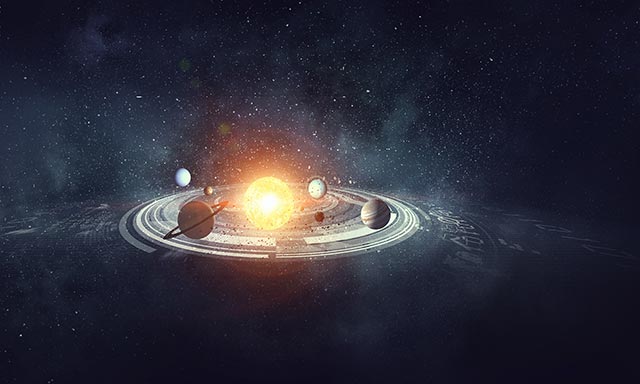‘Oumuamua asteroid may be alien technology, hints study
08/21/2020 / By Virgilio Marin

A mysterious space object that came from outside the solar system may be alien technology. This is because the other candidate theory is faulty, said astrophysicists from Harvard University and the Korea Astronomy and Space Science Institute.
Proponents of the other theory suggest that the interstellar object, ‘Oumuamua, is a comet that is partly or entirely made up of hydrogen molecules. This could explain why astronomers were not able to detect a basic feature of a comet: a coma or a comet’s tail.
But the researchers said that this explanation ignores the fact that if ‘Oumuamua is indeed a hydrogen comet, it would have evaporated midway or early into its journey.
“We were suspicious that hydrogen icebergs could not survive the journey — which is likely to take hundreds of millions of years — because they evaporate too quickly, and as to whether they could form in molecular clouds,” said co-lead author Avi Loeb of the Center for Astrophysics, Harvard & Smithsonian.
The findings of the study are published in the Astrophysical Journal Letters.
Hydrogen comet theory
Scientists detected ‘Oumuamua in 2017. It is the first known interstellar object to drift into the solar system and back out again. It is cigar-shaped — thin and at least a quarter-mile-long, making it 10 times longer than it is wide.
Scientists first classified it as an asteroid until it accelerated and assumed the behavior of a comet; ‘Oumuamua flew past the sun with an estimated speed of 196,000 miles per hour. They noted, however, that its aspect ratio and elongated form are unlike any space object in the solar system.
Furthermore, its acceleration is not caused by gravitational influence — the only explanation for it is that ‘Oumuamua is propelled by outgassing. In this case, the interstellar object should have a comet’s tail, which appears to be absent.
Comets usually come from the outer reaches of the solar system, where poor starlight leads to the formation of ice. When a comet approaches the sun, the ice on the surface sublimates and gases inside the solid core burst out, leaving a trail of gas known as the comet’s tail. The outgassing changes the motion of the comet and sends it tumbling faster away from the sun.
According to a recent study, ‘Oumuamua is a comet composed of hydrogen molecules — lightweight molecules made up of two hydrogen atoms (H2). Proponents of this hypothesis explained that the apparent absence of a coma is due to the invisible action of H2 gas. Similar to the mechanisms in a typical comet, H2 would burst out and blast off the surface of the object, causing it to speed up. However, unlike other comets, ‘Oumuamua did not leave a visible trail because outgassing H2 is invisible, explained scientists. (Related: Ancient stone carvings depict a massive comet strike 13,000 years ago that nearly made humans extinct.)
Alien technology is the only viable explanation
However, the authors of the current study argued that this theory is untenable. They noted that a comet is similar to snowman: It forms out clumps of icy grains of dust and survives only as long as it doesn’t melt.
In the case of an H2 comet, it is bound to fall apart due to starlight. H2 comets can only come from giant molecular clouds several light-years away from the solar system. Hence, it is impossible for ‘Oumuamua to travel great distances across time and space and reach the solar system if it is an H2 comet.
“The proposal appeared promising because it might explain the extremely elongated shape of ‘Oumuamua as well as the non-gravitational acceleration. However, their theory is based on an assumption that H2 ice could form in dense molecular clouds,” said Loeb.
It’s also improbable for an H2 comet to come somewhere relatively near. The researchers said that even starlight in the coldest parts of space would warm up small clumps of solid hydrogen before they can form a comet of ‘Oumuamua’s size.
The authors did not offer an answer as to where the mysterious interstellar object came from. But there is currently one viable explanation for ‘Oumuamua and how it was able to accelerate into space. (Related: Intelligent life across the Milky Way – why 200 billion stars can’t be lifeless.)
It might be a piece of alien technology such as a light sail or solar sail — a wide, millimeter-thin machine that is propelled by radiation pressure or “wind” from a star. One study found that for radiation pressure to effectively accelerate an object, the object would have to be thin with a small mass-to-area ratio.
While it’s still too early to rule out ‘Oumuamua as a natural space object, the evidence so far does not seem to favor a nature-based explanation. In this case, scientists need to broaden their perspective to solve the mystery of ‘Oumuamua.
Cosmic.news has more on the search for alien life.
Sources include:
Submit a correction >>
Tagged Under:
alien life, comets, cool science, cosmic, interstellar, radiation, solar system, Space, Stars, Universe, weird science
This article may contain statements that reflect the opinion of the author





















